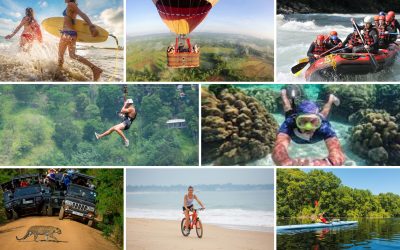Sri Lanka boasts a variety of wildlife in Sri Lanka quite out of proportion to its modest size, including one of the world’s largest populations of both wild and captive elephants an array of other fauna ranging from leopards, sloth bears and giant squirrels through to huge monitor lizards and crocodiles — not to mention a fascinating collection of endemic birdlife. This richness is partly a result of Sri Lanka’s complex climate and topography, ranging from the denuded savannas of the dry zone to the lush montane forests of the hill country and partly due to its geographical position, which makes it a favoured wintering spot for numerous birds as well as a nesting site for five of the world’s species of marine turtles.
Wildlife In Sri Lanka that you can explore
Elephant
The Asian elephant is the number one animal that people on a wildlife holiday in Sri Lanka hope to spot. While there are a number of elephant orphanages that allow you to get up close and personal with the animals by riding and feeding them, seeing elephants in the wild is a much better experience and one that you can do without worrying whether they are being mistreated or not.


Best places to see elephants in Sri Lanka
For the largest herds and best sightings, head to either Udawalawe or Minneriya National Park.
Best time to see elephants in Sri Lanka
Whereas Udawalawe guarantees elephant sightings year-round, the famous elephant gathering in Minneriya occurs during the months of August to September.
Leopard
Perhaps the most elusive cat in the world, the leopard reigns supreme on the little island of Sri Lanka. With no lions or tigers to threaten its position, leopards in Sri Lanka are more casual than they are elsewhere in the world and can often be seen lounging around in the treetops.



Best places to see leopards in Sri Lanka
If leopards are what you are after then head to Yala National park, the area with the highest leopard density.
Best time to see leopards in Sri Lanka
Visit Yala in the dry season from May to October, when vegetation is less thick, and it’ll be much easier to spot this beautiful big cat.
The pearl of the Indian Ocean has many forest reserves with a large diversity of animals and plants. Sri Lanka has a considerable number of plants and animals endemic to the island that are worth to be explored. Here are the forest reserves on the island that you must pay a visit as a true nature lover.
Must Visit National Parks In Sri Lanka


Sinharaja Rainforest
Sinharaja Rainforest is considered as one of the World Heritage Sites and is situated in the south-west lowland wet zone of Sri Lanka. It is the last surviving area of the primary tropical evergreen rainforest of the country. Declared as a Biosphere Reserve in 1978, Sinharaja Rainforest is a treasure trove of endemic species of flora and fauna. About 50% of Sri Lankan endemic species of mammals, reptiles, butterflies, reptiles, amphibians and insects can be found deep inside the dense vegetation of the rainforest. Though it is relatively smaller than other National Parks, Sinharaja is recognized as a living heritage.
Yala National Park
Yala National Park is the island’s second-largest and the most visited national park. It extends over two provinces of Hambantota district of Southern Province and Monaragala District of Uva Province. In the neighbourhood of Yala, there are six national parks and three wildlife sanctuaries with the largest as “Lunugamvehera National Park”. Yala has two important pilgrim sites within the park-like Sithulpawwa and Magul Viharaya and the park got hit by 2004 Indian Ocean tsunami causing severe damage. This forest reserve has one of the highest leopard densities in the world.





Kumana National Park
Kumana National Park best recognized for its avifauna and a prime bird-watching destination in the world. The park is situated 391 km southeast of Colombo and is near the Yala National Park. Established in 1970, the park was formerly known as Yala East National Park. The Kumana Bird Sanctuary is one of the most important bird nesting and breeding grounds in Sri Lanka with 255 species of birds been recorded. Tens of thousands of birds migrate to the Kumana swamp area during the months of April to July.
Bundala National Park
Bundala National Park is situated at the edge of the country where the land, sea and wetlands meet. It is located 250 km southeast of Colombo in Hambantota District. It is an important wintering ground for the Migratory birds in Sri Lanka. Being upgraded as a national park in 1993, the park designated as a Biosphere Reserve by UNESCO in 2005. Bundala National Park has a wide biodiversity of flora and fauna with some endemic to the country. The park is an excellent spot for bird watchers and also checking out many species like crocodiles, elephants, mongooses, monitor lizards and much more species.



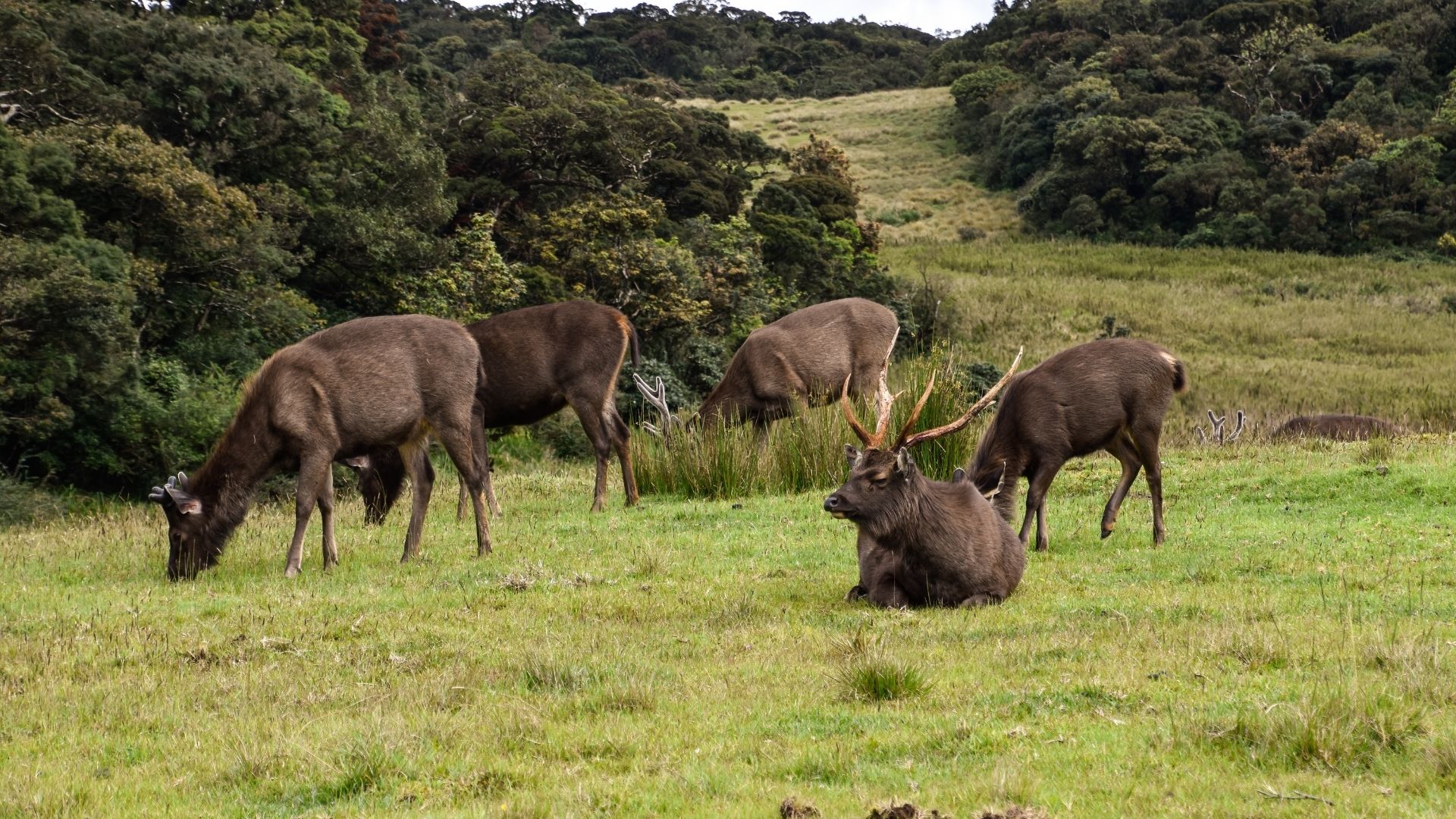

Horton Plains
Horton Plains is a protected area of central highlands situated 32 km from Nuwara Eliya. You will be able to see the marvellous Mini World’s End Point, Great World’s End Point and Baker’s Falls. It has the 2nd and 3rd highest peaks of Sri Lanka, namely Kirigalpoththa and Totupalakanda with the altitude of more than 2300m. The place has a rich diversity of rare flora and fauna that must be explored. Sambar is the most common animal found in the plains, although leopards and wild boars can be found in the area.
Minneriya National Park
Minneriya National Park is located in the North Central Province of Sri Lanka, 182 km from Colombo. The park was established to protect the catchment of the Minneriya tank and the wildlife of the surrounding area. The Minneriya Tank built by King Mahasen in the third century AD is historically an important place. The park gives an opportunity to check out the herds of Elephants throughout the year. Although the months of May to October is the best period to witness the famous gathering of the wild Elephants.
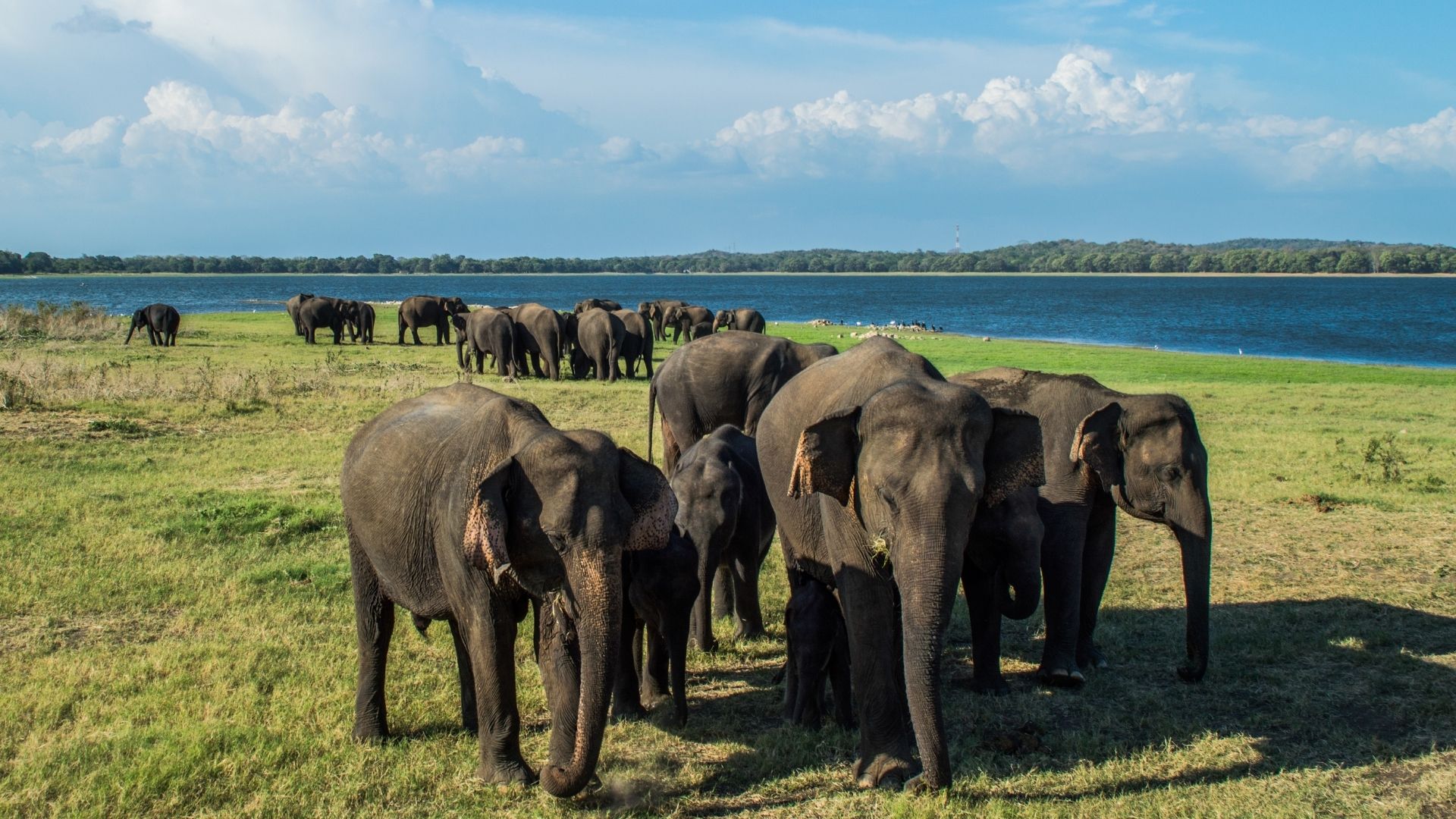



Udawalawe National Park
Udawalawe National Park is situated in the boundary of Sabaragamuwa and Uva Province and is the sixth largest animal sanctuary of Sri Lanka. Situated 165 km from Colombo, the park was created to provide a sanctuary for the displaced wild animals due to the construction of Udawalawe Reservoir on the Walawe River. Udawalawe National Park is the third most visited park in the country. It is known as an important habitat for the Water Birds and Sri Lankan Elephants. Udawalawe is recognized as the best place to check out the wild Asian Elephants throughout the year. Other species of animals like Water Buffaloes, Deers, Bandicoots, Foxes and even small wildcats can be seen in the park.
Wilpattu National Park
Wilpattu National Park is hailed as the land of lakes since nearly 60 lakes are found in the reserves. It is situated in the northwest coast lowland dry zone of the island, 26 km north of Puttalam. It is the largest and the oldest national parks in Sri Lanka. The forest has a rich history dating back to the times of King Vijaya, the first king of Sri Lanka. The best time to visit the National Park is during the months of February and October. The biggest attractions in the park are the Leopards and Sloth Bears. Even Asian Elephants, Deers, Jackals, Samburs, Mugger Crocodiles and many more can be found.


The pearl of the Indian Ocean has many forest reserves with a large diversity of animals and plants. Sri Lanka has a considerable number of plants and animals endemic to the island that are worth to be explored. Here are the forest reserves on the island that you must pay a visit as a true nature lover.
Must Visit National Parks In Sri Lanka
Sinharaja Rainforest
Sinharaja Rainforest is considered as one of the World Heritage Sites and is situated in the south-west lowland wet zone of Sri Lanka. It is the last surviving area of the primary tropical evergreen rainforest of the country. Declared as a Biosphere Reserve in 1978, Sinharaja Rainforest is a treasure trove of endemic species of flora and fauna. About 50% of Sri Lankan endemic species of mammals, reptiles, butterflies, reptiles, amphibians and insects can be found deep inside the dense vegetation of the rainforest. Though it is relatively smaller than other National Parks, Sinharaja is recognized as a living heritage.
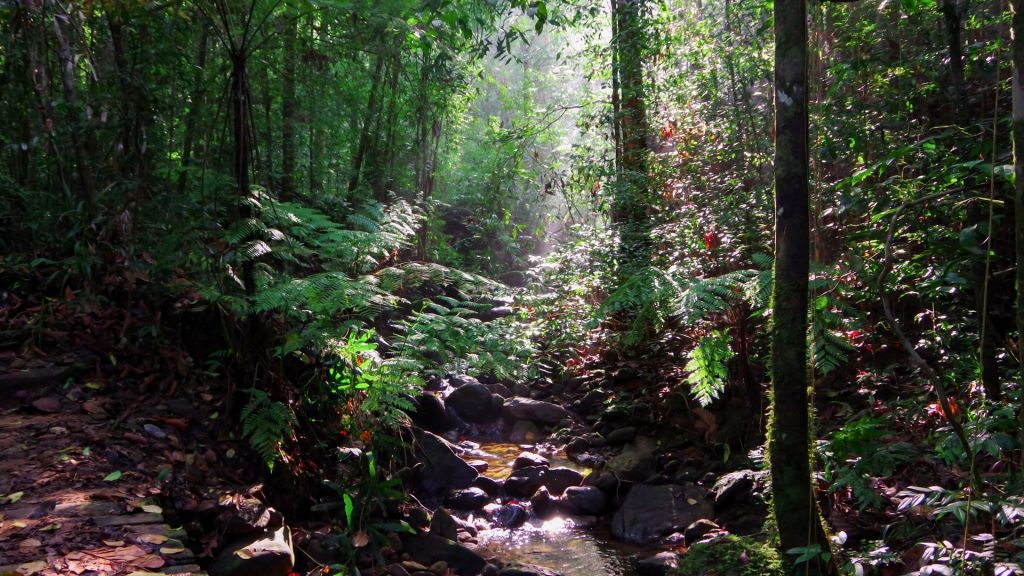

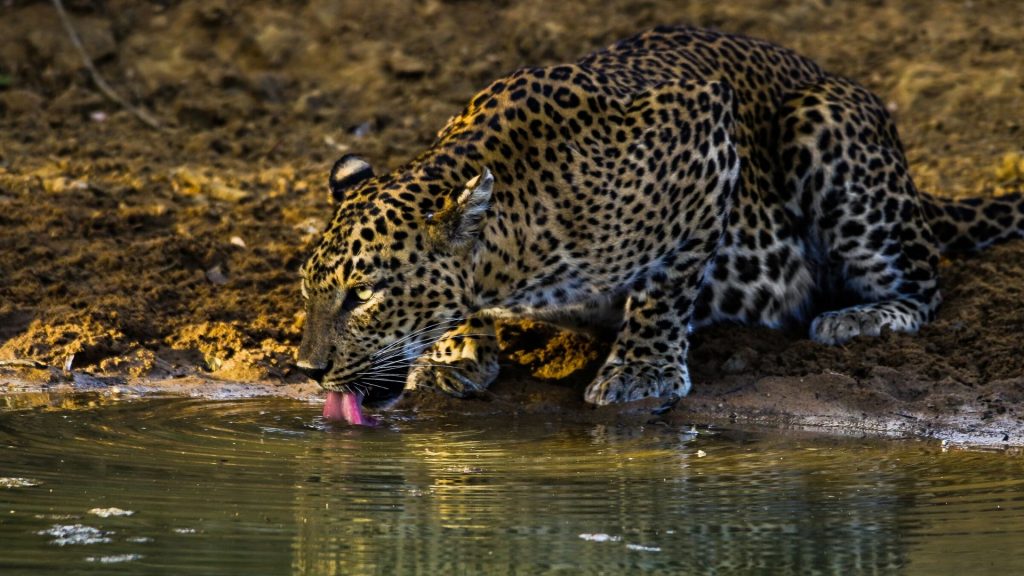

Yala National Park
Yala National Park is the island’s second-largest and the most visited national park. It extends over two provinces of Hambantota district of Southern Province and Monaragala District of Uva Province. In the neighbourhood of Yala, there are six national parks and three wildlife sanctuaries with the largest as “Lunugamvehera National Park”. Yala has two important pilgrim sites within the park-like Sithulpawwa and Magul Viharaya and the park got hit by 2004 Indian Ocean tsunami causing severe damage. This forest reserve has one of the highest leopard densities in the world.
Kumana National Park
Kumana National Park best recognized for its avifauna and a prime bird-watching destination in the world. The park is situated 391 km southeast of Colombo and is near the Yala National Park. Established in 1970, the park was formerly known as Yala East National Park. The Kumana Bird Sanctuary is one of the most important bird nesting and breeding grounds in Sri Lanka with 255 species of birds been recorded. Tens of thousands of birds migrate to the Kumana swamp area during the months of April to July.




Bundala National Park
Bundala National Park is situated at the edge of the country where the land, sea and wetlands meet. It is located 250 km southeast of Colombo in Hambantota District. It is an important wintering ground for the Migratory birds in Sri Lanka. Being upgraded as a national park in 1993, the park designated as a Biosphere Reserve by UNESCO in 2005. Bundala National Park has a wide biodiversity of flora and fauna with some endemic to the country. The park is an excellent spot for bird watchers and also checking out many species like crocodiles, elephants, mongooses, monitor lizards and much more species.
Horton Plains
Horton Plains is a protected area of central highlands situated 32 km from Nuwara Eliya. You will be able to see the marvellous Mini World’s End Point, Great World’s End Point and Baker’s Falls. It has the 2nd and 3rd highest peaks of Sri Lanka, namely Kirigalpoththa and Totupalakanda with the altitude of more than 2300m. The place has a rich diversity of rare flora and fauna that must be explored. Sambar is the most common animal found in the plains, although leopards and wild boars can be found in the area.




Minneriya National Park
Minneriya National Park is located in the North Central Province of Sri Lanka, 182 km from Colombo. The park was established to protect the catchment of the Minneriya tank and the wildlife of the surrounding area. The Minneriya Tank built by King Mahasen in the third century AD is historically an important place. The park gives an opportunity to check out the herds of Elephants throughout the year. Although the months of May to October is the best period to witness the famous gathering of the wild Elephants.
Udawalawe National Park
Udawalawe National Park is situated in the boundary of Sabaragamuwa and Uva Province and is the sixth largest animal sanctuary of Sri Lanka. Situated 165 km from Colombo, the park was created to provide a sanctuary for the displaced wild animals due to the construction of Udawalawe Reservoir on the Walawe River. Udawalawe National Park is the third most visited park in the country. It is known as an important habitat for the Water Birds and Sri Lankan Elephants. Udawalawe is recognized as the best place to check out the wild Asian Elephants throughout the year. Other species of animals like Water Buffaloes, Deers, Bandicoots, Foxes and even small wildcats can be seen in the park.


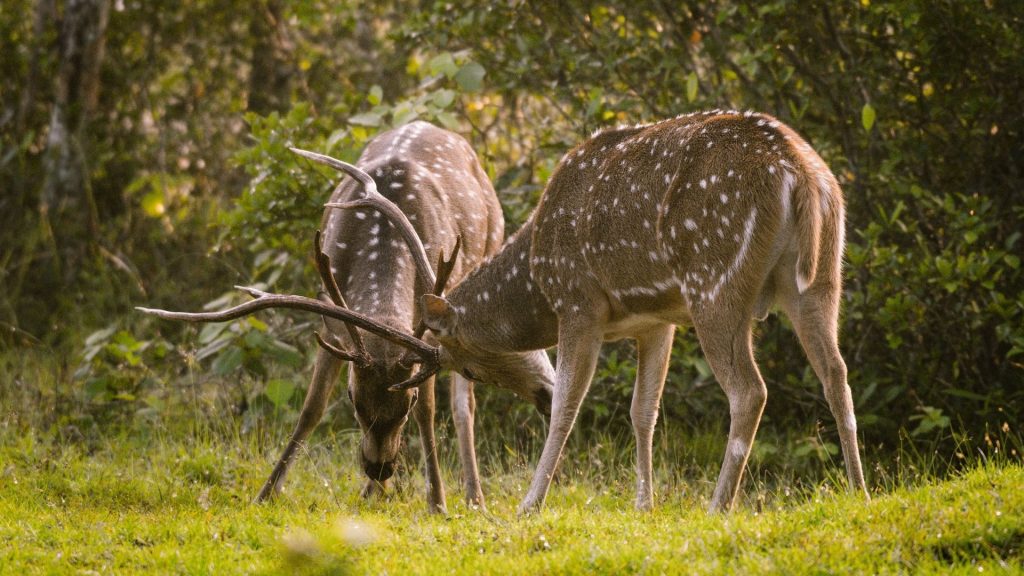

Wilpattu National Park
Wilpattu National Park is hailed as the land of lakes since nearly 60 lakes are found in the reserves. It is situated in the northwest coast lowland dry zone of the island, 26 km north of Puttalam. It is the largest and the oldest national parks in Sri Lanka. The forest has a rich history dating back to the times of King Vijaya, the first king of Sri Lanka. The best time to visit the National Park is during the months of February and October. The biggest attractions in the park are the Leopards and Sloth Bears. Even Asian Elephants, Deers, Jackals, Samburs, Mugger Crocodiles and many more can be found.



